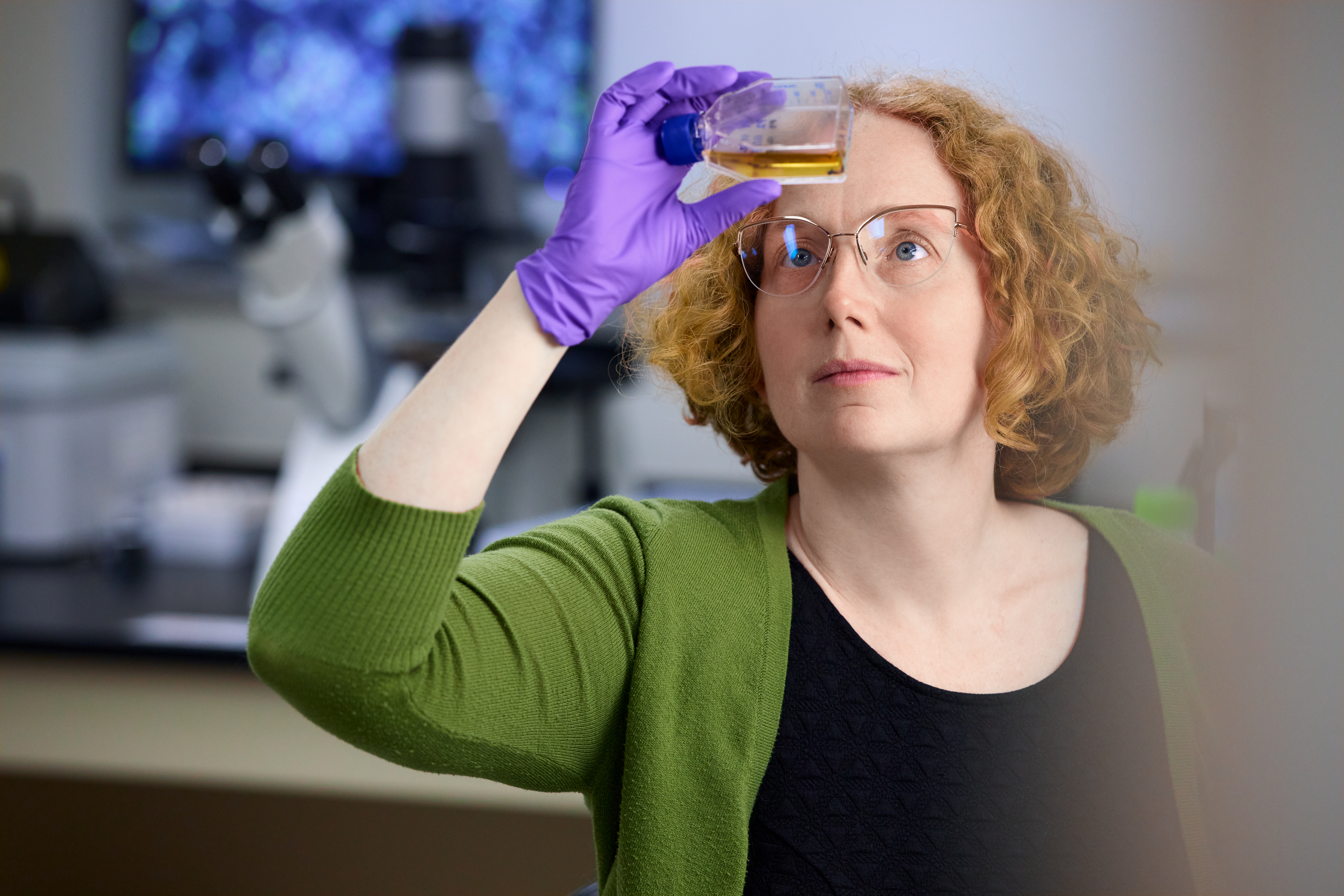
By Shannon Turgeon
Photography by Joshua Franzos
Tera Levin, assistant professor of biological sciences, Kenneth P. Dietrich School of Arts and Sciences, has always had an interest in “invisible things that have big impacts.”
She is now putting this interest into practice by using bacteria and amoeba to research how new pathogens evolve and emerge from the environment—and how these pathogens ultimately develop the tools that enable them to infect people.
On Friday, Oct. 17, Levin will present “How to Build a Cellular Fortress: The Origins and Evolution of Innate Immune Defenses” as part of the 2025 Senior Vice Chancellor’s Research Seminar Series. (Join the lecture here.)
Levin’s lab uses Legionella pneumophila, the bacteria that causes Legionnaires’ disease, as a model for how pathogens can emerge from the natural world. They use a research method called experimental evolution to determine whether amoeba can cause L. pneumophila to become more virulent in different conditions.
Bacteria become more infectious through a process called horizontal gene transfer, where genes move between different genomes.
Through her research, Levin has been able to demonstrate what the pressures are that cause horizontal gene transfer to happen and show the genes being acquired and lost.
“If you have an epidemic where something bad is spreading through a population, you can watch a lot of individuals get sick. In our system, we cause an amoeba epidemic. What we're able to see is that all the microbial evolution that enabled that epidemic—like acquiring a virulence gene—is totally done by the time we recognize an epidemic has occurred,” said Levin.
“There's an invisible earlier period that scientists usually never get to access or observe when the real action is occurring. But now, we have recreated this system in the lab where we can actually track when and how those genes are moving,” she said.
Her research suggests that amoeba have certain proteins that serve as their immune systems. Some of those proteins are the same ones that humans have.
“So, you can imagine that if the bacteria can fight back against the amoeba version, they can fight back against our version, too,” said Levin.
This discovery led Levin to investigate amoeba immunity and work to understand the overlaps between amoeba and human proteins. Her research team uses computational biology to explore cellular immune proteins that are shared across species to understand their evolutionary history and functions.
Levin is hoping to expand this research to continue answering questions surrounding the evolution of infectious diseases. One potential method involves using experimental evolution with different amoeba species to try to determine which environmental hosts are more virulent than others. Another option is to study the virulence genes that L. pneumophila uses to infect its hosts to determine how pathogens acquire the genes.
While studying how cells, bacteria and amoeba behave in the natural world may seem small, this type of research can lead to discoveries that have big effects on human health.
“A lot of what's happening out there does end up having big effects on our health. We don't have to only be reactive. If we can better understand what's happening in these ecosystems, even just with the pathogens, then we can start to better anticipate problems that might come up in the future,” said Levin.
